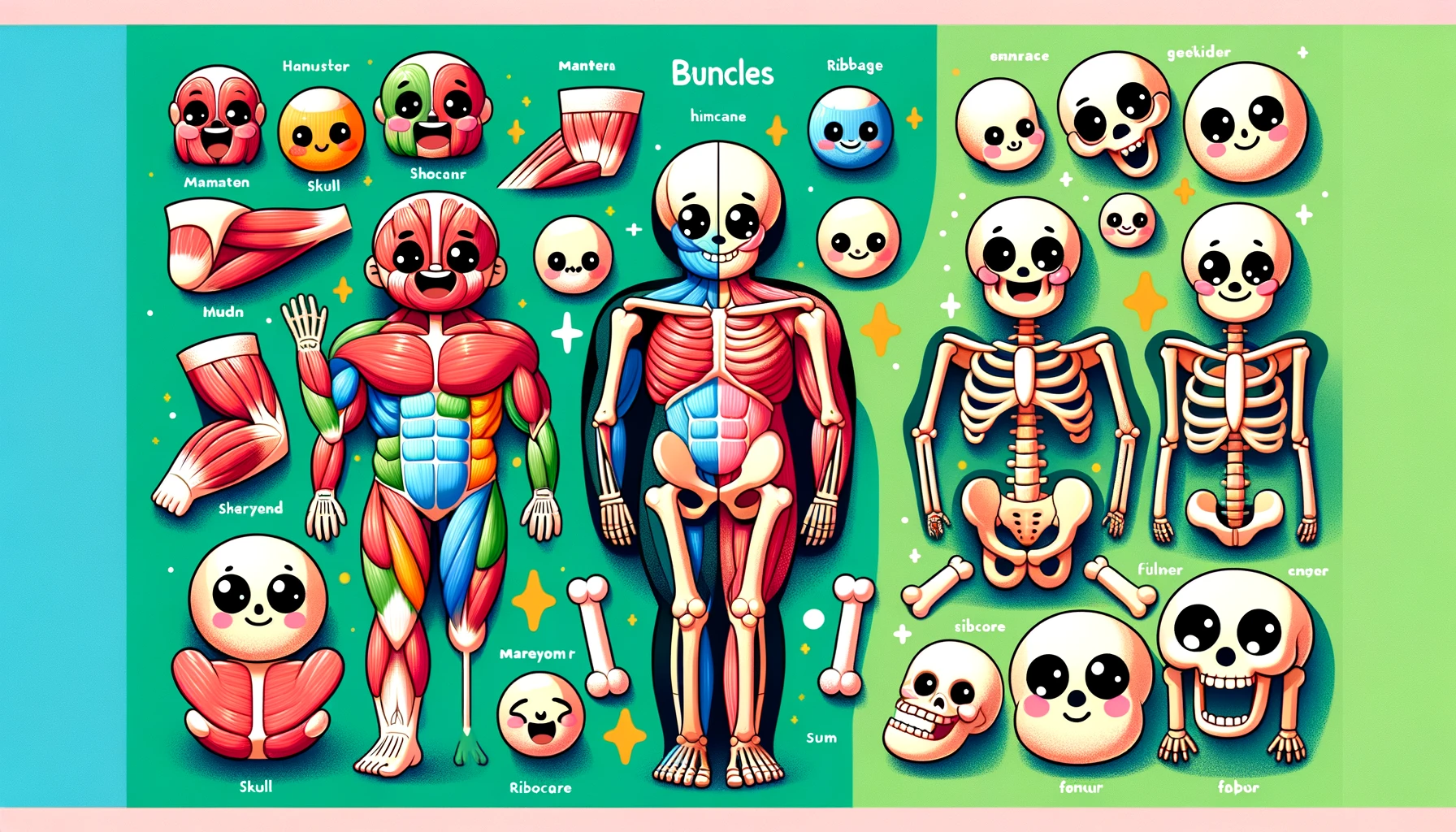Muscles vs. Bones: Understanding Their Differences and Functions
Muscles vs. Bones: Understanding Their Differences and Functions
Table of Contents
- Introduction to Muscles and Bones
- Structure of Muscles
- Structure of Bones
- Functions of Muscles
- Functions of Bones
- Interactions Between Muscles and Bones
- Common Muscle and Bone Disorders
- Importance of Muscle and Bone Health
- Conclusion
- References
Muscles vs. Bones: Understanding Their Differences and Functions
Introduction to Muscles and Bones Muscles and bones are fundamental components of the human body that work together to provide structure, support, and movement. This article explores the differences and functions of muscles and bones, highlighting their crucial roles in maintaining overall health and mobility.
Structure of Muscles Muscles are composed of specialized cells called muscle fibers, which are capable of contraction. There are three main types of muscle tissue:
- Skeletal Muscle: Attached to bones and responsible for voluntary movements. Skeletal muscles are striated and multinucleated.
- Cardiac Muscle: Found only in the heart, responsible for pumping blood. Cardiac muscles are striated and have a unique branching structure.
- Smooth Muscle: Found in the walls of internal organs and blood vessels, responsible for involuntary movements. Smooth muscles are non-striated and have a spindle-shaped appearance.
Structure of Bones Bones are rigid structures made primarily of collagen and calcium phosphate, providing strength and flexibility. They can be categorized into four main types:
- Long Bones: Found in the arms and legs (e.g., femur, humerus).
- Short Bones: Found in the wrists and ankles (e.g., carpals, tarsals).
- Flat Bones: Provide protection and surfaces for muscle attachment (e.g., skull, ribs).
- Irregular Bones: Have complex shapes (e.g., vertebrae, pelvic bones).
Functions of Muscles Muscles perform several essential functions in the body:
- Movement: Muscles contract and relax to produce movement, allowing us to walk, run, lift objects, and perform other activities.
- Posture Maintenance: Muscles help maintain posture by providing stability and support to the skeleton.
- Heat Production: Muscle contractions generate heat, helping to maintain body temperature.
- Circulation: Cardiac muscles pump blood throughout the body, while smooth muscles in blood vessels help regulate blood flow.
Functions of Bones Bones have multiple critical functions:
- Support: Bones provide a framework that supports the body and maintains its shape.
- Protection: Bones protect vital organs (e.g., skull protects the brain, ribcage protects the heart and lungs).
- Movement: Bones act as levers that muscles pull on to produce movement.
- Mineral Storage: Bones store essential minerals, such as calcium and phosphorus, which can be released into the bloodstream as needed.
- Blood Cell Production: Bone marrow produces red blood cells, white blood cells, and platelets in a process called hematopoiesis.
Interactions Between Muscles and Bones Muscles and bones work together in the musculoskeletal system to facilitate movement and provide stability:
- Tendons: Connective tissues that attach muscles to bones, transmitting the force generated by muscle contractions to the skeleton.
- Ligaments: Connective tissues that connect bones to other bones, providing joint stability.
- Joints: Structures where two or more bones meet, allowing for varying degrees of movement depending on the type of joint (e.g., hinge joints, ball-and-socket joints).
Common Muscle and Bone Disorders Several disorders can affect muscles and bones, leading to pain, reduced mobility, and other health issues:
- Muscle Disorders: Include muscular dystrophy, myasthenia gravis, and muscle strains or tears.
- Bone Disorders: Include osteoporosis, osteoarthritis, fractures, and bone cancer.
Importance of Muscle and Bone Health Maintaining muscle and bone health is essential for overall well-being:
- Exercise: Regular physical activity, including weight-bearing and resistance exercises, strengthens muscles and bones.
- Nutrition: A balanced diet rich in calcium, vitamin D, and protein supports muscle and bone health.
- Preventive Care: Regular check-ups, avoiding smoking, and limiting alcohol consumption can help prevent muscle and bone disorders.
- Injury Prevention: Using proper techniques during physical activities and ensuring a safe environment can reduce the risk of injuries.
Conclusion Understanding the differences and functions of muscles and bones is crucial for appreciating their roles in the human body. By maintaining muscle and bone health through exercise, nutrition, and preventive care, individuals can enhance their overall health and mobility.
<ⓒ WizardMedics (wizardmedics.com)>







